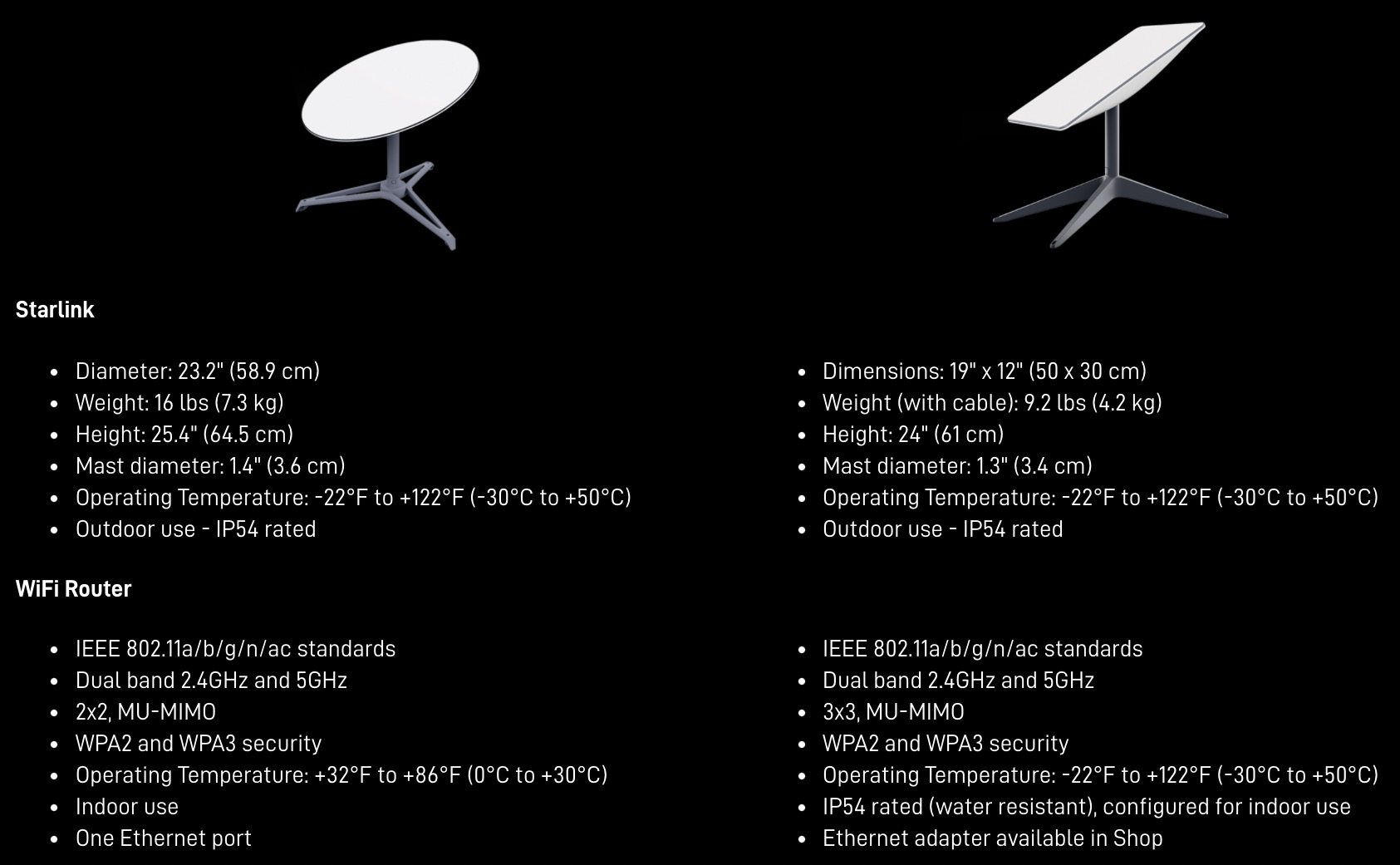For something different, did we discuss the new Starlink dishes that are square?

I'd have to guess most of us who wind up going the starlink route in Texas will get this model, or rather hopefully one that also includes an Ethernet port. Also an intent to drop the price to $250 to 300 sounds good.Quote:
The rectangular satellite dish that will be sent to new users is 1912 inches, compared to the original circular dish's diameter of 23.2 inches. The dish's weight is 9.2 lbs, down from the original's 16 lbs. The operating temperature range of -22F to +122F (-30C to +50C) is unchanged, so the thermal shutdowns that have affected some users of the original "Dishy McFlatface" satellite dish could continue to be a problem.
The Federal Communications Commission approved Starlink's new user terminals on Wednesday. The main differences between the old and new equipment are described in the specifications section of a support FAQ.
There are some additional mounting options for the new satellite dish, including wall mounts that come in two different sizes and are "designed for installation on an exterior wall near the top of the gable." You can see mounting options for the new user terminal in this document and mounting options for the previous terminal here. Each user terminal comes with a base for ground-level installation, while mounting hardware is sold separately.
New Wi-Fi router lacks Ethernet port
The updated hardware kit's Wi-Fi router uses 33 MU-MIMO instead of the previous 22 MU-MIMO, so it can transmit in three spatial streams instead of two. There is one downgrade in the new router, as it doesn't have an Ethernet port like the original did. Starlink's website notes that users can buy an Ethernet adapter in the Starlink shop.
"To connect a 3rd party router or mesh system, you will need to purchase the Ethernet Adapter from the Starlink Shop to allow for a wired connection to the network. Bypass functionality is coming soon, and we are actively working on development of a Starlink mesh product," the website says.
The original Wi-Fi router supported operating temperatures of +32F to +86F (0C to +30C) while the new one supports a wider range of -22F to +122F (-30C to +50C), according to the support FAQ. The new router also has an IP54 dust- and water-resistance rating, the same rating listed for both the old and new satellite dishes. These changes suggest that this new version of the router could be used outdoors, but the FAQ says the router is still "configured for indoor use."



